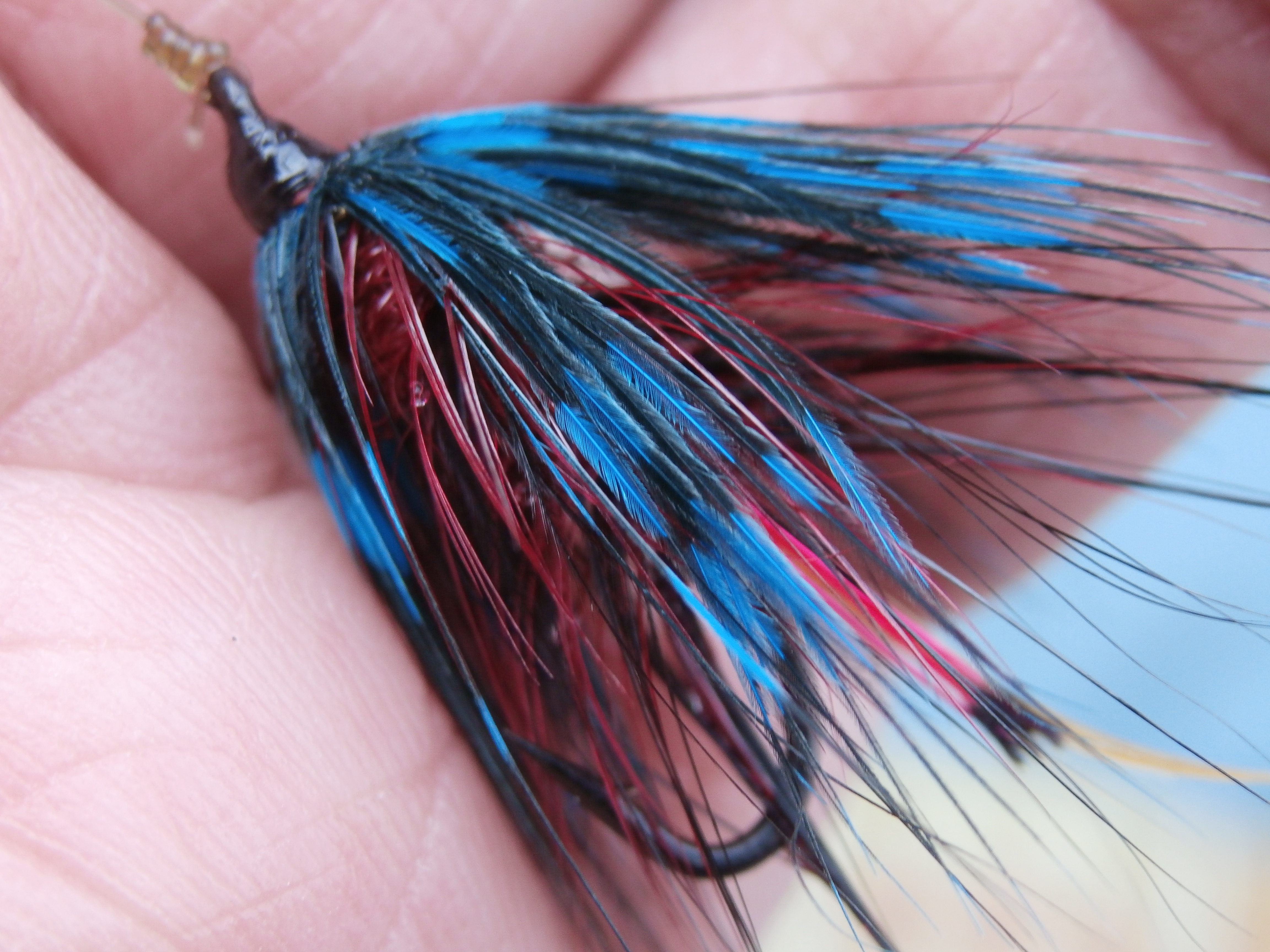The couple of hours between 3 and 5pm on a Saturday afternoon usually find me in the same place. At the fly tying vice slurping endless mugs of coffee, tying flies while listening to the football on the radio. Not for me the fancy-shmansy television coverage; I prefer the old school approach to soccer. If I can’t be there I will listen to the commentary on the ‘wireless’. This Saturday was no different, Spurs thrashed Stoke and I made wet flies.
One of them is a result of me playing around with some new materials. It doesn’t have a name but it is a kind of gosling / bumble hybrid. I intend trying it as a pulling pattern for brownies during late Spring and early summer.

Tying silk is fl. Fire Orange, size 8/0 and I used a size 10 Kamasan B175 hook.

Now run the silk down to the bend and catch in some cock pheasant tail fibres which have been dyed hot orange to form the tail.

Catch in a length of fine oval gold tinsel and run the tying silk back up towards the eye but stop about 6mm from the eye. You need to leave plenty of space for the hackles on this fly! Tie in the two cock hackles which are going to be used as body hackles, one cock hackle dyed golden olive and another grizzle cock dyed bright yellow. Secure them facing forward over the eye of the hook and bind the stems down tightly as you run the silk back to where the tails are tied in, removing the waste ends. Now dub the silk with some bright orange seals fur or substitute and wind this back to the point where the body hackles are tied in. Aim for a tapered shape to the body.
Grab both of the body hackles with pliers and make evenly spaced, open turns down the body before using the ribbing tinsel to counter wrap through the hackles. Secure with the tying silk and then remove the waste hackles and tinsel.

Now for the three head hackles. First tie in and wind a couple of turns of a long-fibred cock hackle dyed fl. yellow. Next up is a French Partridge hackle dyed hot orange, again, a couple of turns is sufficient.

Finally a couple of turns of another long-fibred cock hackle, this time a grizzle dyed dark olive. Finish off with a neat head and clear varnish. Now all you have to do is wait until next may to try it!


